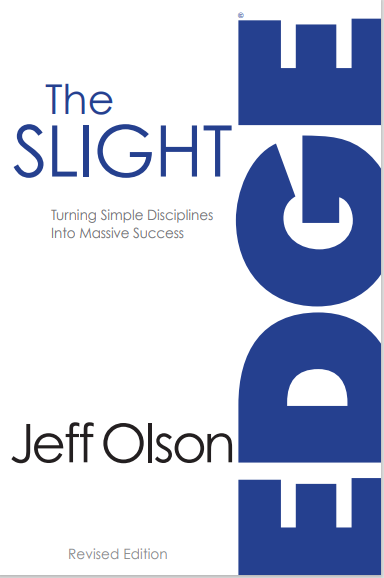موضوعات
آموزش و پرورش
ادبیات و زبان
پزشکی، دندانپزشکی و داروسازی
تاریخ و جغرافیا
داستان و رمان
دیگر
دین و فلسفه
روانشناسی
ریاضیات و آمار
سلامتی، تناسب اندام و رژیم غذایی
شیمی و پلیمر
علوم اجتماعی و حقوق
علوم زیستی و بیوتکنولوژی
فیزیک و نجوم
کامپیوتر و اینترنت
کتابهای کودکان و داستان
کسب و کار و اقتصاد
کشاورزی و دامپزشکی و غذا
معماری
مهندسی و فناوری
هنر و تئاتر
محصولات
The Slight Edge - Original PDF
نویسندگان: خلاصه: Lesson 1: Every day we have to choose between success or failure The philosophy behind The Slight Edge is that success is the result of repetitive productive actions over a consistent period. When you adopt this mindset, your actions have to follow immediately for them to work. Therefore, everything we do each day must coincide with our burning desire to achieve success. This is something that’ll occupy your mind even when you’re not actively aware of it, such as when you’re thinking about what you should eat, or when you choose to go to bed earlier instead of losing sleep. First, you have to choose your predominant state of mind. Either you have the blaming mindset or the winning mindset. The first category likes to play the victim, and blame their misfortune in life for their failures. The second type of people takes responsibility for their actions, especially when life throws challenges at them. You should aim to become more like the second type, and then examine your focus. Are you oriented toward the future or the past? Instead of living in regret, you should take your past experiences and turn them into life lessons. The two sets of people differ not because life treated one better than the other, but because of how they chose to respond to it. Every day you have a choice between actively building a successful life, or staying right where you are. Lesson 2: Learn to appreciate the invisible results of your work to achieve what 95% of people don’t It is estimated that only five percent of people achieve their goals in life. These people not only understand what The Slight Edge is all about, but they’re also willing to put in the work that 95% of their peers aren’t. Therefore, if you think that small everyday choices don’t make a difference in the long run, you’ll have to think again. What makes the difference between those who achieve their goals and those who don’t lie in our everyday choices? We can either do that 15 minutes workout, or we don’t. We can choose to eat a healthy meal for today or go for junk food. However, these small, day-to-day choices will eventually define our future. By the time you can observe that someone has a competitive edge over you, it becomes too late to catch up on them. That is because the mundane things which are part of a daily routine seem invisible while you’re doing them, but as they add up in time, they’re building your future. Successful people know and leverage this concept for their benefit. In contrast, unsuccessful people live in the moment and go by the philosophy that what they’re doing at the moment doesn’t matter. Truth is, success is gradual, and so is failure. If you want to make your future self proud, you’ll have to do something about it in the present day, every day. Lesson 3: Implementing the three-step goal-setting process can put you miles ahead of the game If you want to meet your goals, you need to be able to set them. Implementing the three-step goal-setting process can put you miles ahead of the game. It all starts with writing down your goals, then visualizing them daily, and developing an action plan. Write down your goals clearly and simply. Then, read them aloud. This helps cement the idea in your head and make sure they’re clear on paper (or computer screen). Writing down objectives is also proven to boost the chance of you achieving them and remembering them long term. Look at them daily: You should look at the list of goals every day—either right when you wake up or right before bed—and ask yourself if you’ve done anything toward those goals that day. If not, why not? What could you do differently tomorrow? Try making some small changes in your daily routine so that these small changes add up over time until they help you achieve those bigger goals! Some people find that vision boards help, as they’re always there to look at in times of distress or when you lack momentum. Develop a plan: Once you’ve written down your goals, looked at them every day, and asked yourself why they haven’t been achieved yet, it’s time to develop a plan for moving forward with them! Set your end goal and then divide it into smaller chunks and bite-sized objectives.آیا کتاب مورد نظر هنوز بر روی سایت قرار نگرفته است؟ جای نگرانی نیست! کافی است بر روی گزینه سفارش کتاب کلیک کرده و درخواست خود را ثبت کنید. در کمتر از چند ساعت کتاب شما را آماده خواهیم کرد.
